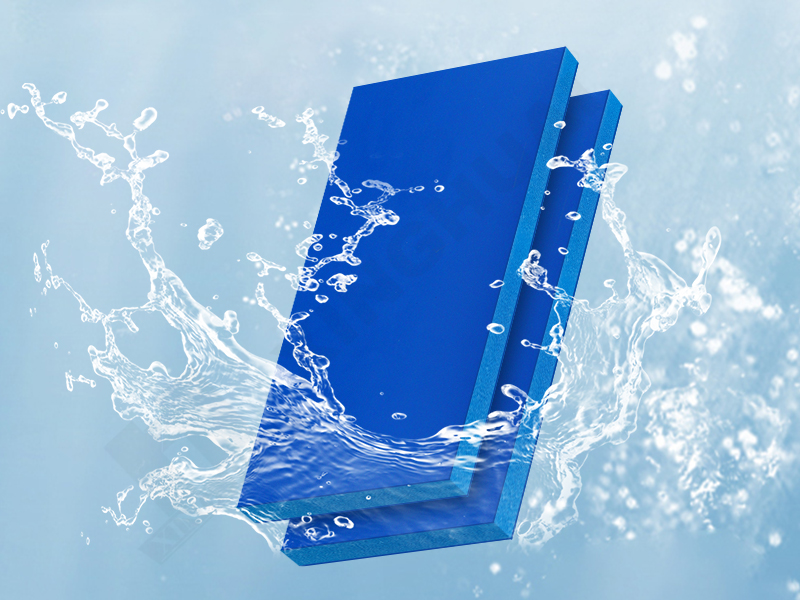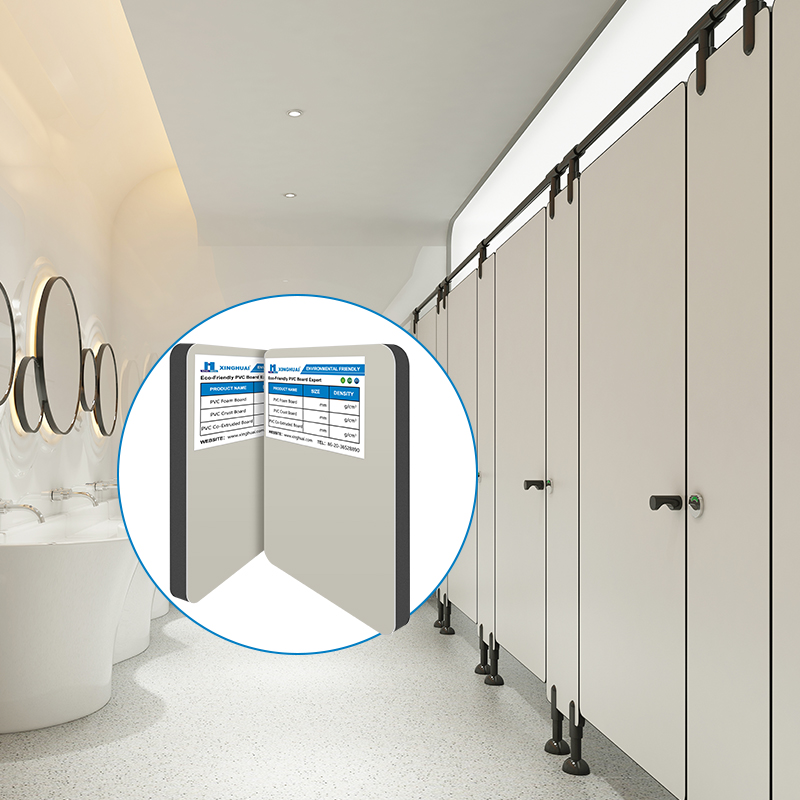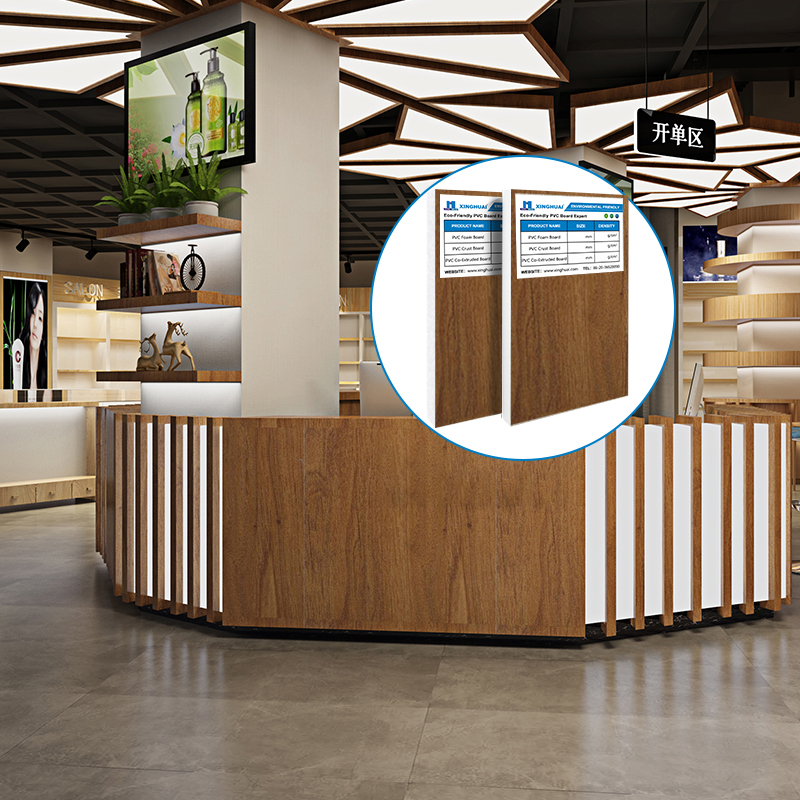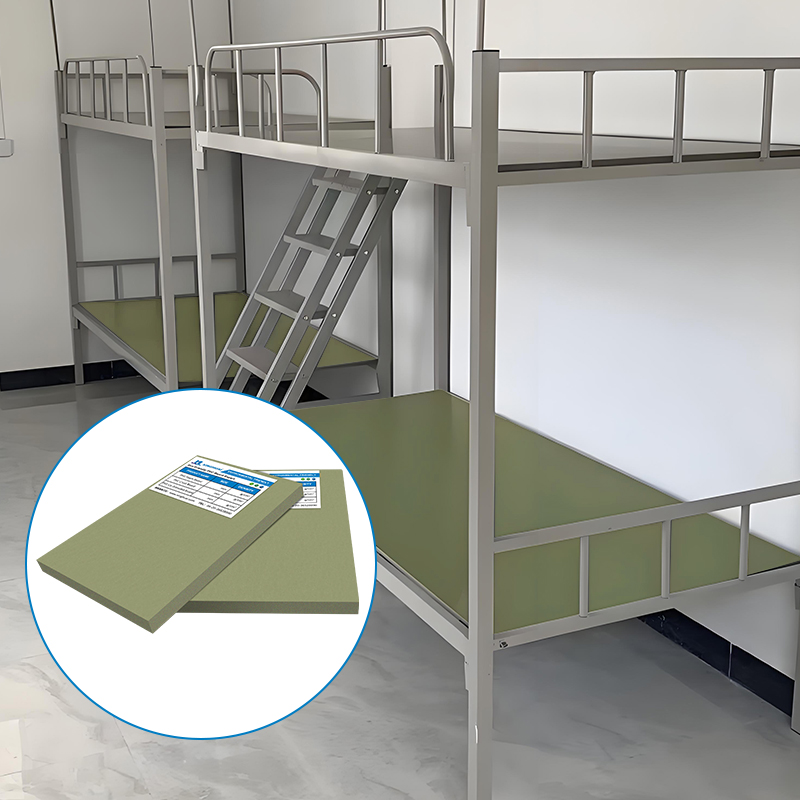What is the Production Process of PVC Free Foam Board?
1.Why Does PVC Foam Board Have Waterproof and Flame-Retardant Properties?
PVC foam board, including white PVC board sheet and PVC rigid board, derives its exceptional waterproof and flame-retardant properties from its unique material composition and molecular structure.
Waterproof Performance:
The core of PVC foam board is polyvinyl chloride (PVC), a polymer with a high density of chlorine atoms in its molecular chain. These chlorine atoms form a robust dddhhhshielddddhhh that repels water molecules, preventing penetration into the material. Additionally, the closed-cell foam structure—created during production—ensures that water cannot infiltrate through interconnected pores, as the cells are isolated from one another. This dual mechanism grants PVC foam board, such as PVC foam panels and PVC foam board 4x8, an extremely low water absorption rate (typically <0.5%), making it ideal for wet environments like bathrooms, kitchens, and outdoor signage.Flame-Retardant Properties:
PVC inherently contains chlorine, which acts as a natural flame retardant. When exposed to fire, the chlorine atoms decompose to release hydrogen chloride gas, which dilutes flammable gases and inhibits combustion. Furthermore, manufacturers often incorporate flame-retardant additives (e.g., antimony trioxide, aluminum hydroxide) into the PVC resin during production to enhance this effect. The result is a material that self-extinguishes when the ignition source is removed, meeting international fire safety standards (e.g., UL94 V-0).
2. What Is the Production Process of PVC Free Foam Board?
The production of PVC foam board, including PVC free foam board, involves a multi-step process that combines extrusion, foaming, and cooling to create a lightweight, rigid panel with uniform density. Here’s a detailed breakdown:
Step 1: Raw Material Preparation
The primary ingredients are PVC resin, plasticizers (to enhance flexibility), stabilizers (to prevent degradation during heating), foaming agents (e.g., azodicarbonamide), and fillers (e.g., calcium carbonate for cost reduction and stiffness). These components are mixed in precise proportions in a high-speed mixer to form a homogeneous powder.
Step 2: Extrusion
The mixed powder is fed into a twin-screw extruder, where it is heated to 160–200°C and melted into a viscous fluid. The screw design ensures thorough mixing and plasticization while generating pressure to force the molten PVC through a die.
Step 3: Foaming
As the PVC exits the die, it enters a low-pressure zone where the foaming agent decomposes, releasing gas (typically nitrogen or carbon dioxide). This gas expands the molten PVC, forming a cellular structure. The key to PVC free foam board is controlling the foaming process to create closed cells with minimal interconnection, ensuring waterproofing and dimensional stability.
Step 4: Calibration and Cooling
The expanding foam is immediately passed through a calibration unit—a set of sizing dies or rollers—that shapes it into the desired thickness and width (e.g., standard PVC foam board 4x8 sheets). Simultaneously, cooling fans or water baths rapidly solidify the foam, locking in its structure.
Step 5: Cutting and Finishing
The cooled PVC foam board is cut to length using a saw or shear, then trimmed to remove edge imperfections. Optional surface treatments (e.g., embossing, laminating) may be applied to enhance aesthetics or functionality.
3. How Is the PVC Free Foam Board Cut and How Is the Size Customized After Production?
PVC free foam board is highly versatile in terms of customization, pvc foam board 4x8 thanks to its lightweight and rigid nature. Here’s how it’s processed post-production:
Cutting Methods
Mechanical Cutting:
For standard sizes (e.g., PVC foam board 4x8), automated saws or shears are used for high-speed, precise cuts. Circular saws with carbide-tipped blades are common for straight edges, while oscillating saws handle curves or intricate shapes pvc foam board 4x8 .CNC Routing:
Computer-controlled routers enable complex cuts, such as holes, slots, or custom profiles, with tolerances as tight as ±0.1mm. This is ideal for architectural moldings or signage.Laser Cutting:
For ultra-fine details (e.g., logos, text), CO2 lasers vaporize the PVC foam, leaving clean edges without mechanical stress. This method is popular for promotional displays pvc foam board 4x8.
Size Customization
PVC free foam board can be customized in both thickness (1–30mm) and dimensions (up to 3m x 2m or larger). Manufacturers adjust the extrusion die gap and cooling calibration to produce specific thicknesses, while cutting tools trim panels to length and width as needed. For large-scale projects, panels can be joined using PVC welding or adhesive bonding to create seamless surfaces.
4. What Is the Storage Capacity of PVC Free Foam Board?
The storage capacity of PVC free foam board refers to its ability to maintain performance under various environmental conditions over time. Proper storage ensures the material retains its waterproof, flame-retardant, and mechanical properties:
Ideal Storage Conditions
Temperature: Store in a cool, dry place (15–30°C). Avoid extreme heat (ssshhh40°C), which may soften the foam or cause warping, or cold (<5°C), which can make it brittle pvc foam board 4x8 .
Humidity: Keep relative humidity below 60% to prevent moisture absorption, which could slightly swell the edges (though closed-cell structure minimizes this risk) pvc foam board 4x8.
Ventilation: Ensure adequate airflow to prevent condensation, especially in humid climates.
Stacking: Place panels flat on pallets with protective sheets between layers to avoid scratches. Limit stack height to ≤1.5m to prevent compression deformation.
Shelf Life
Under ideal conditions, PVC free foam board can be stored for 1–2 years without significant degradation. However, prolonged exposure to UV light (e.g., outdoor storage) may cause surface yellowing, which can be mitigated with UV-stabilized formulations.
5. Conclusion
PVC free foam board, encompassing varieties like white PVC board sheet, PVC rigid board, and PVC foam panels, is a high-performance material renowned for its waterproof, flame-retardant, and lightweight properties. Its production involves a sophisticated extrusion-foaming process that creates closed-cell structures, while post-production cutting and customization allow for endless design possibilities pvc foam board 4x8. With proper storage, it maintains its integrity for years, making it a cost-effective solution for applications ranging from interior decoration to industrial signage pvc foam board 4x8. Whether you need standard PVC foam board 4x8 sheets or bespoke profiles, this material delivers reliability and versatility in equal measure.




